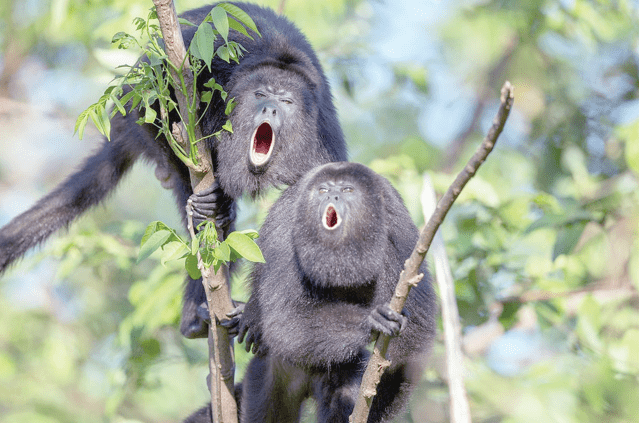Using nature-based solutions in climate change adaptation

Climate change and biodiversity loss are the twin crises having a significant impact on communities globally. Nature-based solutions (NbS) can address the challenges and provide benefits for human well-being and biodiversity.
NbS are actions that use nature to address social, economic and environmental challenges. They are actions that can help with issues such as climate change, food and water security, disaster risk reduction, biodiversity loss and human health and well-being.
How does NbS work? NbS use the natural functions of healthy ecosystems to deliver positive outcomes. For example, an urban forest can help cool temperatures and provide recreational spaces.
NbS can benefit both people and nature and deliver co-benefits in addition to their intended outcomes. The International Union on the Conservation of Nature (IUCN) Global Standard for Nature-based Solutions helps guide the design, implementation, and evaluation of NbS.
But what does the NbS approach to climate adaptation look like for the communities involved?
Writing in the International Institute for Sustainable Development (IISD)’s latest edition of the Earth Negotiations Bulletin, Onyinye Oguntoye and Danielle Kitson sampled nine locally-driven ideas ranging from cultivating seaweed seeds to planting hurricane-resistant trees.
The duo reiterates that NbS for adaptation are actions that manage, protect, conserve, restore and sustainably use the natural environment to strengthen the resilience of communities and nature to the impacts of climate change. NbS involve assessing how climate will affect natural ecosystems and people of all genders and social backgrounds.
Community role
When deciding which NbS for adaptation interventions to implement, it is important to ask the right questions and consider if the options will be effective, inclusive and sustainable.
One way to achieve this is to support locally-led and locally-driven ideas. Locals and Indigenous Peoples are best positioned to explain how these challenges affect them in real life, pointing out what solutions will work in their unique contexts given their in-depth knowledge of their communities.
Interventions such as these also promote sustainability and participation. When communities and local groups are involved from the start, they are more likely to take ownership, resulting in long-lasting benefits. No one understands the challenges of climate change and biodiversity loss better than those who experience it first-hand.
Embracing this approach, Oguntoye and Kitson highlight nine organisations led by women and other unrepresented groups that are pioneering local adaptation through NbS projects.
From seaweed seeds to planting native trees, these groups from Belize, Uganda, Zambia and Zimbabwe, in partnership with the Climate Adaptation and Protected Areas (CAPA) initiative are bringing their locally-driven NbS ideas to life.
The Belize Women Seaweed Farmers Association is creating a seaweed seed bank, developing a seaweed farm tour and increasing market access for seaweed products. Climate change impacts, particularly shifting rainfall patterns and rising sea temperatures, have slowed seaweed growth and reduced productivity.
This project focuses on regenerative and sustainable seaweed farming that enhances marine ecosystems and fish nurseries. The innovative seaweed farm tour will also help to diversify income sources by leveraging the tourism potential of the southern half of Belize’s coast.
Belize’s Hopkins Fishermen Association is tackling flooding and ecosystem degradation by clearing debris from waterways and using traditional planting knowledge to restore mangroves, which serve as natural buffers to storms and mitigate coastal erosion.
The initiative hopes to restore fish habitats, reduce flood risks and enhance coastal resilience by improving water flow in estuaries and lagoons. The project also engages the community to ensure long-term environmental and social benefits through ecosystem conservation and sustainable resource management.
Native solutions
In Uganda, the Nyambuko Development Group is addressing flooding, soil erosion, prolonged drought and declining agricultural productivity inside the Queen Elizabeth National Park. The project involves creating 15km of trenches to control the flow of water and protect against landslides. It will also include planting vetiver grass to stabilize soil and conserve water in a highland farming area prone to mudslides and drought.
Using this approach, the project aims to enhance soil fertility and improve crop yields, directly benefiting local farmers vulnerable to climate change impacts.
Elsewhere in Uganda, the Bwitho Men and Women’s Development Group is combating landslides that sweep away the vegetation and farm biodiversity in hilly landscapes by introducing rainwater harvesting systems made from locally sourced materials.
Water tanks constructed with soil-burnt bricks and river sand will capture runoff from homes within the park, preventing soil loss and conserving water for gardens and farming. Overflow water will be directed to conservation trenches, mitigating erosion and promoting sustainable land and water use.
The Community Baboon Sanctuary Women’s Group in Belize is restoring degraded riparian forests within the Maya Forest Corridor by planting native trees and introducing drought- and hurricane-resistant Maya Nut Tree.
The project aims to address erosion, flooding, and its adaptation to tropical climates and offers multiple benefits, such as providing feed for livestock, shade for cattle, and natural habitat for mammals, birds, reptiles and insects, improving soil and water quality, and helping mitigate climate change through carbon sequestration.
The Kyankwanzi Bakyara Tukorere Hamwe Biika Oguze group in Uganda’s Queen Elizabeth National Park is aiming to mitigate human-wildlife conflicts by planting native trees, including fruit trees along community boundaries near wildlife reserves. The initiative will create multi-sensory barriers to deter elephants and other wildlife from exiting protected areas and damaging crops and property.
Environmental restoration
The group will be combining native thorny species like fagara with citrus trees such as lemon to create a deterrent that uses both physical barriers (thorns) and strong odours to keep wildlife at bay. These trees are long-lasting, self-generating and low maintenance, making them cost-effective solutions.
The Matoya Cooperative Nursery Project in Zambia aims to restore Nsongwe River and riparian ecosystems outside Mosi-oa-Tunya National Park by planting native tree species, ecosystems historically adapted to the region’s climate and soil conditions. The nursery will focus on native tree species to rejuvenate these areas and introduce bamboo cultivation techniques, contributing to environmental restoration and sustainable livelihoods for the community.
The Kalobolewa Community Group and Multipurpose Cooperative Society are creating two demonstration plots for the community within Zambia’s Sioma Ngwezi National Park. One is a forest plot where sustainable forest management techniques, including fire management, will be demonstrated to community members.
The second plot will demonstrate the use of natural herbs for pest management and organic fertiliser and develop a nursery for the native Devil’s Claw and Lungwatanga (Citrullus naudinianus) seedlings, for community members to plant at home, reducing the harvesting pressure within gazetted forests.
Zimbabwe’s Asizameni Omama Cooperative is encouraging the propagation of drought-resistant native trees at the household level, which can be used for livelihood activities like basket and mat weaving. It aims to address increasing temperatures and droughts, reducing the pressure on natural resources by creating alternative livelihoods for women living on the outskirts of the Victoria Falls National Park by expanding tree nurseries for native and fruit trees.
NbS for adaptation is helping these communities build resilience to climate change, bringing their innovative ideas to life. NbS are also creating sustainable interventions that are suitable for the local context and benefit both communities and ecosystems.
The United Nations General Assembly proclaimed the 2021 to 2030 the UN Decade on Ecosystem Restoration while funding such as the CAPA Innovation Fund supports groups taking new approaches to planting native trees to restore degraded ecosystems and address climate risks.











